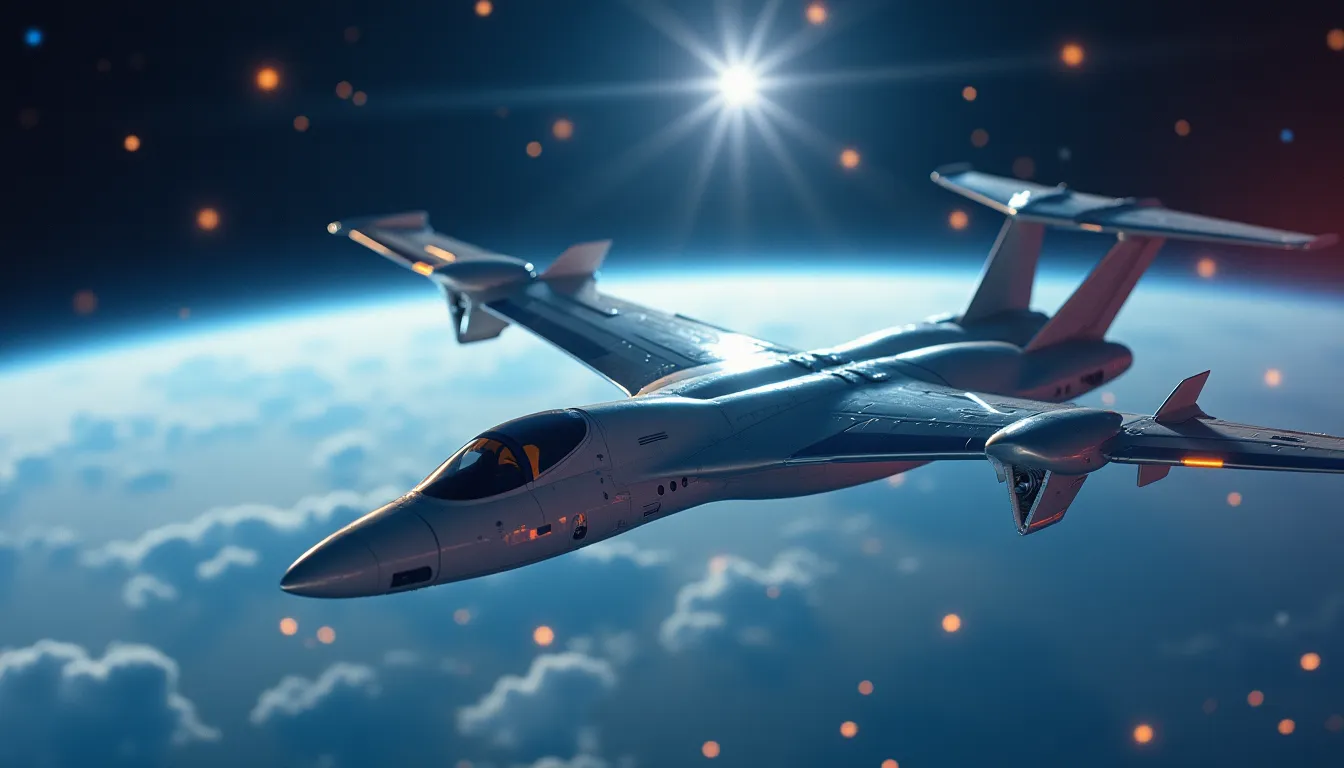The aerospace and defense sectors are witnessing a rapid evolution, driven by technological advancements and geopolitical dynamics. Recent developments highlight the integration of artificial intelligence (AI) in military operations, significant drone technology agreements, and the increasing threats posed by global players like China. This article delves into these advancements and their implications for the future of defense strategies.
AI Integration in Air Warfare
One of the most groundbreaking advancements in recent weeks is the U.S. Air Force’s successful flight test pairing an F-16 fighter jet with an AI-controlled XQ-58A Valkyrie drone. This test, conducted in early October 2025, marks a pivotal moment in the integration of AI into air combat scenarios, demonstrating the potential for AI-piloted combat aircraft to enhance operational effectiveness by the early 2030s.
The XQ-58A Valkyrie is classified as a low-cost, attritable drone, designed to conduct tactical missions with capability for high subsonic speeds and stealth operations. Its ability to operate autonomously and in coordination with manned aircraft could fundamentally alter air warfare dynamics. As noted by an Air Force official, “The Valkyrie is not just a tool; it represents a shift towards more complex, multi-domain operations that leverage AI to enhance decision-making and responsiveness in combat scenarios.”
Advancements in Drone Technology: The U.S.-Ukraine Deal
Simultaneously, the U.S. and Ukraine are advancing a significant drone technology collaboration. This agreement could provide the Pentagon with access to millions of drones, including expendable loitering munitions and long-range strike UAVs. The focus on rapid production and software-defined tactics highlights the evolving landscape of modern warfare, where speed and adaptability are paramount.
This development underscores the need for high-performance systems like the Advanced Sensor Module, which integrates a 9-DOF MEMS IMU, offering exceptional stability and comprehensive motion sensing capabilities. As military operations become increasingly reliant on unmanned systems, precision and reliability in drone technology will be critical for mission success.
Identifying Global Threats: China’s Space Expansion
In parallel with advancements in drone capabilities, U.S. military officials have identified China as the foremost threat in space. The rapid expansion of China’s orbital military capabilities, with over 1,189 satellites currently in operation, raises significant concerns regarding surveillance and strike capabilities. U.S. Space Force generals have emphasized the necessity for a strategic reassessment of defense postures in light of these developments.
As the space domain becomes increasingly contested, the importance of reliable tracking and positioning systems cannot be overstated. Advanced technologies such as the ZQXXSGDSS System, a high-performance single-tube PIN quadrant detector, play a vital role in precise laser beam positioning and tracking applications, crucial for maintaining operational superiority in space.
Investment in Defense Technology
The defense sector is experiencing a surge of investment, with projections indicating approximately $28 billion allocated in 2025. This influx is largely driven by the escalating need to address emerging security threats, particularly those associated with AI and unmanned systems. As noted by industry analysts, “Investment trends indicate a clear shift towards technologies that enhance situational awareness and operational efficiency.”
Companies involved in defense technology are increasingly focusing on innovations that incorporate advanced capabilities, such as quartz MEMS gyroscopes for precision navigation and thermal battery systems for sustained operations in diverse environments. These advancements are essential for developing a robust defense infrastructure capable of countering modern threats.
Emerging Technologies in Aerospace Manufacturing
The aerospace manufacturing sector is also witnessing transformative changes, particularly with the introduction of 3D multisensor metrology systems and additive manufacturing techniques. These innovations enhance the production capabilities of various aerospace components, ensuring higher precision and efficiency in manufacturing processes.
Swift’s SULE UAS, which recently received a NASA SBIR award, exemplifies the integration of cutting-edge technology in unmanned systems. The ability to leverage advanced manufacturing techniques will be key to maintaining competitiveness in the aerospace industry.
Conclusion
As the aerospace and defense sectors continue to evolve, the integration of AI, advancements in drone technology, and the identification of global threats will play pivotal roles in shaping future military strategies. With significant investments and a focus on innovative technologies, the industry is poised to address the challenges of modern warfare effectively. The ongoing developments underscore the importance of maintaining a technological edge in both air and space domains, ensuring that defense capabilities are not only responsive but also resilient against emerging threats.
The future of aerospace and defense will undoubtedly be shaped by these advancements, as nations strive to adapt to a rapidly changing geopolitical landscape.
References
-
U.S. Air Force’s Top Gun AI pairs F-16 fighter jet pilot with … (armyrecognition.com) - 10/6/2025 According to CBS News, published on October 5, 2025, the U.S. Air Force completed a groundbreaking flight test pairing an F-16 fighter jet …
-
U.S. and Ukraine advance drone tech deal granting Pentagon … (armyrecognition.com) - 10/6/2025 U.S. and Ukraine advance drone tech deal granting Pentagon access to millions of drones. 6 Oct, 2025 - 13:27; Defense News Aerospace 2025 …
-
Defense Tech Grows as AI Security Threats Push $28B Investment … (www.prnewswire.com) - 10/2/2025 Investment grew to approximately $28 billion in 2025 as venture capital more than doubled year-over-year, with Q2 alone bringing $19 billion as …
-
US generals warn China poses top space threat, say Beijing … (www.digitimes.com) - 10/1/2025 According to the Space Force’s latest threat fact sheet, China operated more than 1,189 satellites as of July 2025, a staggering 927% increase …
-
Former Air Force chief scientist to guide program development at … (news.berkeley.edu) - 10/1/2025 Former Air Force chief scientist to guide program development at Berkeley Space Center. Victoria Coleman, with extensive industry, government …
-
October 2025 - Aerospace Manufacturing and Design (www.aerospacemanufacturinganddesign.com) - 1/1/2025 Just Landed: 3D multisensor metrology system · Cover Shots: Latest manufacturing technology October 2025 · Up and Soaring: Swift’s SULE UAS wins NASA SBIR award …
-
Aerospace & Defense Conference, Washington, DC (www.theaerospaceevent.com) - 4/4/2023 The Aerospace Event in Washington, DC will focus on understanding the confluence of policy, technology and strategy for Aerospace & Defense.



